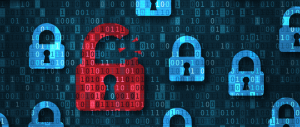Today, thousands of SaaS solutions are accessed via the cloud. That’s a lot of data being transmitted by millions of people every day. SaaS businesses are growing at a sky-high pace, increasingly becoming the first choice due to easy up-gradation, scalability, and low infrastructure needs.
However, as this demand continues to grow, so too do the opportunities for hackers to steal sensitive information. For this reason, security within the SaaS world is becoming more and more of a focus – and rightly so. Here are a few best security practices that you should follow when creating your SaaS solution…
Take advantage of encryption
Encryption is a great way to encode your data to protect it from unauthorised users, however, the majority of SaaS companies do not use it. Vast amounts of personal information may be stored on your application. GDPR is still a hot topic, and keeping this data private is really important.
Encryption provides integrity, confidentiality, and authentication for you and your users. Even if someone is trying to access your data, they will not be able to decode it without the encryption keys. That’s because encryption scrambles readable text so that it can only be read by the person who has the secret code, or decryption key. It provides a final line of defense that protects data, even when compromised by hackers. But remember – make sure it’s you that has control of the encryption keys, rather than allowing a hosting or cloud solution company to manage them.
Create a security-first culture
There’s no use just one or two members of your team championing security if the rest of the team using the platform aren’t enforcing it at the same level. Everyone who manages, administers, or operates IT infrastructure needs to become security conscious. Infusing security into your organisational culture puts security at the top of the priority list.
Could you offer or outsource regular training to your team on security risks and threats? Hackers are forever becoming more sophisticated, and new cyber risks are emerging all the time, so the learning should never stop. Implementing a solid security training programme within your team is a good way to enforce and remind individuals of their role in business security, and the difference that their efforts to be hyper-aware can make.
Use multifactor authentication & good password security
Focus on your access controls both internally and externally. These are the gateway to your software. For instance, you may usually grant access to your employees if they are connected to the corporate network. What happens if they are working remotely and try to access whilst off-network? Incorporating multifactor authentication means that you can be assured of their identity, and grant access accordingly. This could involve a verification code being sent to a mobile phone or email address. If it’s someone outside of your network who should not be trying to access, the multifactor authentication is sophisticated enough to keep them out.
It’s also a good idea to require two-step authentication or minimum password length and character variety for accessing your software. Insist that your customers use more complex passwords to protect their details. This also serves as an indication to them that you have made the effort to make your platform as secure as possible. Factoring in specific personal questions for password reset – such as the name of your hometown or your first pet’s name – is also wise. These two methods may seem obvious, but they can be easily missed in the haste to launch a product. Who knows – perhaps in the future we’ll be logging in via thumbprint and retina scans instead!
Fail to prepare, prepare to fail
When it comes to security, prevention is key. Always develop a detailed security plan before you launch your product and make sure every member of your team understands it fully. By pinpointing all of the scenarios in which security could be compromised in the future, you can find some sort of a solution to combat each one.
For instance, what happens if your software provider goes into administration? You are relying on their security and consistent connection in order to operate – but external threats could interrupt or break that connection. Your software and data will still exist, but you may not have a contractual right to access it. Make sure you have extra protection in place with SaaS Escrow. It protects your critical cloud-based and off-premise software in the event of your hosting provider going out of business. Instead of being left with a blank screen and inaccessible data, you’ll be able to access what’s yours for at least three months of business continuity. It’s a no-brainer.
Want to know more about SaaS Escrow? We can help. Call LE&AS today on 0800 456 1115.





